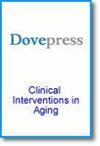Construction of an Exercise Intervention Program for Patients with Sarcopenic Obesity: A Delphi Method Study
IF 3.7
3区 医学
引用次数: 0
Abstract
Purpose: Construct an exercise intervention program for patients with sarcopenic obesity.Material and Methods: Based on the COM-B theoretical model and evidence-based principles, the program was constructed using qualitative methods of literature analysis and Delphi method. The Delphi panel consisted of 15 experts from the fields of clinical medicine, rehabilitation medicine, medical technology, and nursing.
Results: Fifteen experts were consulted, and the consultation recovery rate was 100%; the authority coefficient of the 1st round was 0.83, with coefficients of variation ranging from 0.00 to 0.27, and importance scores ranging from (4.13± 1.13) to (5± 0); the authority coefficient of the 2nd round was 0.82, with coefficients of variation ranging from 0.00 to 0.20, and importance scores ranging from (4.53± 0.64) to (5± 0); Kendall’s harmony coefficient was 0.102, 0.115, respectively, and the differences were statistically significant(P < 0.05). The constructed exercise intervention program for patients with sarcopenic obesity included 4 primary indicators, 12 secondary indicators, and 28 tertiary indicators.
Conclusion: The constructed exercise intervention program for patients with sarcopenic obesity is scientific, feasible and generalizable, and can provide useful reference for related personnel to develop exercise programs for patients with sarcopenic obesity.
Keywords: sarcopenic obesity, exercise, older adults, COM-B theoretical model, evidence-based nursing, delphi method
为肥胖症患者制定运动干预计划:德尔菲法研究
目的:为肌肉疏松性肥胖症患者制定运动干预计划:以COM-B理论模型和循证原则为基础,采用文献分析和德尔菲法等定性方法构建该方案。德尔菲小组由来自临床医学、康复医学、医疗技术和护理领域的 15 位专家组成:15位专家接受了咨询,咨询回收率为100%;第1轮权威系数为0.83,变异系数为0.00~0.27,重要性评分为(4.13±1.13)~(5±0)分;第2轮权威系数为0.82,变异系数为0.00~0.27,重要性评分为(4.13±1.13)~(5±0)分。82,变异系数在0.00~0.20之间,重要性得分在(4.53±0.64)~(5±0)之间;Kendall和谐系数分别为0.102、0.115,差异有统计学意义(P <0.05)。构建的肌肉疏松性肥胖患者运动干预方案包括4个一级指标、12个二级指标和28个三级指标:构建的肌肉疏松性肥胖患者运动干预方案具有科学性、可行性和可推广性,可为相关人员制定肌肉疏松性肥胖患者运动方案提供有益参考。 关键词:肌肉疏松性肥胖;运动;老年人;COM-B理论模型;循证护理;德尔菲法
本文章由计算机程序翻译,如有差异,请以英文原文为准。
求助全文
约1分钟内获得全文
求助全文
来源期刊

Clinical Interventions in Aging
GERIATRICS & GERONTOLOGY-
CiteScore
6.20
自引率
2.80%
发文量
193
期刊介绍:
Clinical Interventions in Aging, is an online, peer reviewed, open access journal focusing on concise rapid reporting of original research and reviews in aging. Special attention will be given to papers reporting on actual or potential clinical applications leading to improved prevention or treatment of disease or a greater understanding of pathological processes that result from maladaptive changes in the body associated with aging. This journal is directed at a wide array of scientists, engineers, pharmacists, pharmacologists and clinical specialists wishing to maintain an up to date knowledge of this exciting and emerging field.
 求助内容:
求助内容: 应助结果提醒方式:
应助结果提醒方式:


